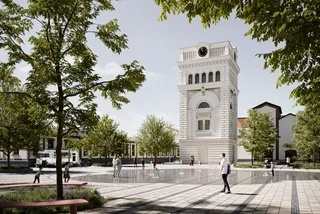Prague will be undergoing significant changes in the future. The Metropolitan Plan, which was first presented in 2018, has been revised and updated to reflect the opinions of both the public and government authorities. People can now see the plan and participate in another round of comments before it becomes final. Details of the plan can now be seen at the Center for Architecture and Metropolitan Planning (CAMP).
The plan takes into account five key areas: the environment around us, public space, housing, climate change, and public amenities.
According to Prague Deputy Mayor Petr Hlaváček, the plan will better protect the greenery at housing developments, protect the character and uniqueness of individual neighborhoods and localities, strengthen protection for existing parks, and provide for many new ones.
Another new element in the plan is the regulation of panoramas and the protection of horizons. Regulations will newly cover the height of buildings.
The basic scope of the new master plan is to keep the city from expanding into the landscape…while also making more efficient use of brownfields and promoting affordable housing. Compared to the original version of the Metropolitan Plan in 2018, we have also strengthened the protection of public amenities,” Hlaváček said.
The plan's concept of the environment around us will treat each neighborhood as a distinct entity. Thorough mapping will take place to create a picture of the buildings and public spaces, and height limits will be set for each area, among other things. Each neighborhood will be seen as a cell that plays a role within the complex organism of the city.
Public spaces, including streets, squares, and parks, will be divided into categories based on importance. The plan sets rules for protecting or developing land and establishes new public spaces in developing areas. Pedestrian access and outdoor public activities are taken into account in public spaces.
For housing, the plan defines new residential areas, which are largely empty areas within the city that are not being used. The idea is to alleviate the housing crisis while at the same time not expanding the city into the outskirts, which would negatively impact the environment. The plan also protects existing courtyards and gardening settlements from development.
Nature areas will be protected under the plan’s climate change provisions. Parks will be developed in neglected areas, and biocentres and biocorridors will be defined. The areas around the Vltava river and other waterways will be defined and protected so they can serve to alleviate flooding.
Existing public amenities – such as schools, kindergartens, clinics, and shops – will be protected, and their placement in new developments will have priority. The idea is that in the future, Prague will be a city of “short distances” where people do not have to go far from where they live to get the goods or services they need.
The new exhibition "It's a Plan!" (To je plán!) is at the CAMP, the public information center of the Prague Institute of Planning and Development (IPR Praha). The exhibition, which runs until June 30, was designed to help people get acquainted with the Metropolitan Plan’s five principles.
Visitors can get acquainted with the basic principles of the plan and comment on it on the spot or through the city’s information portal. In addition to the exhibition, IPR Praha and the city are planning an information tour in the city districts, which will start on May 9. The first stop is the area behind Prague’s Quadrio shopping center.
Two public hearings, where the plan will be explained to the public by its authors, will take place on May 30 and June 23. Details of the Metropolitan Plan can be found on a dedicated website. People can also comment on the plan via the website.












 Reading time: 3 minutes
Reading time: 3 minutes 


























